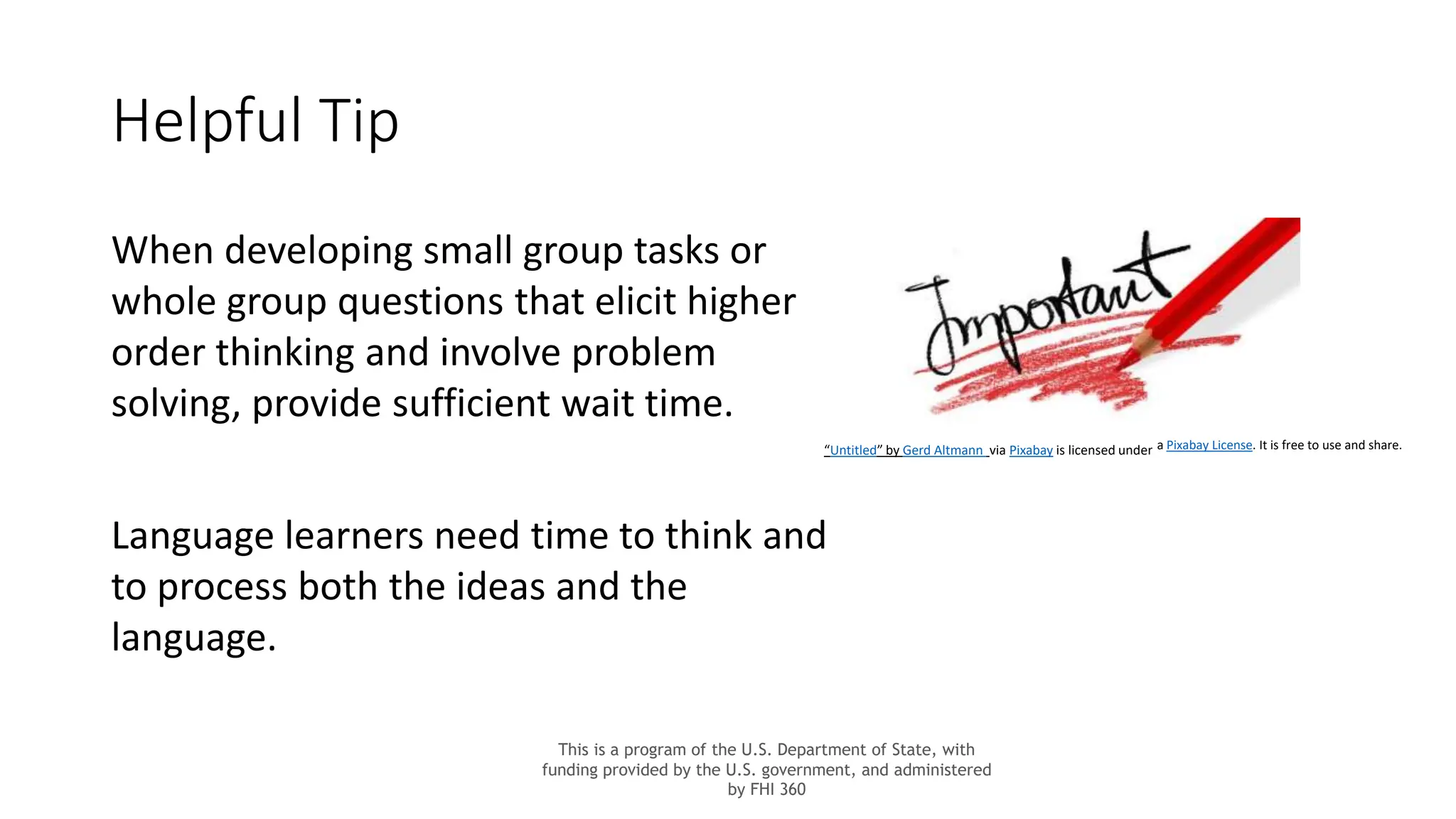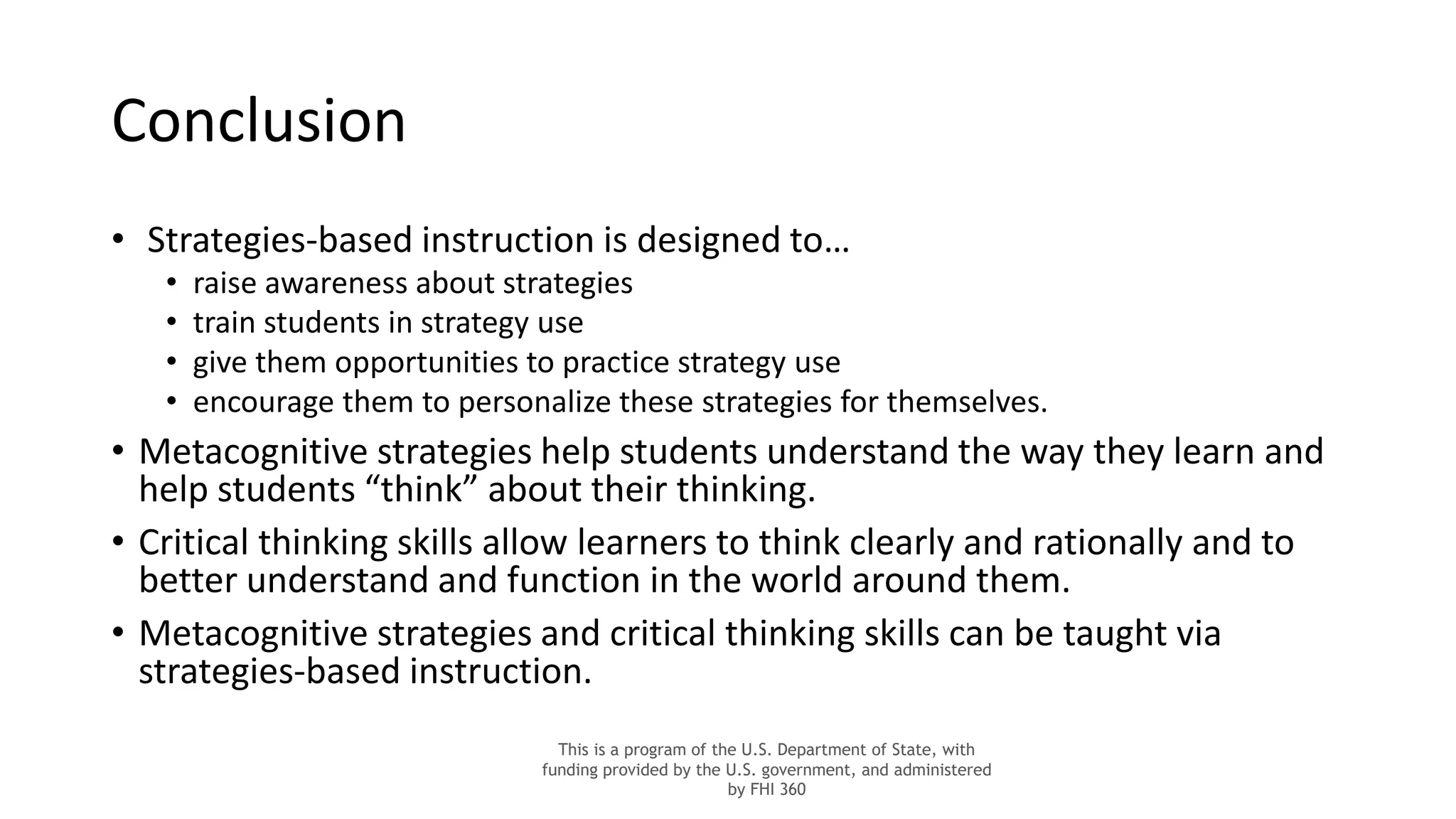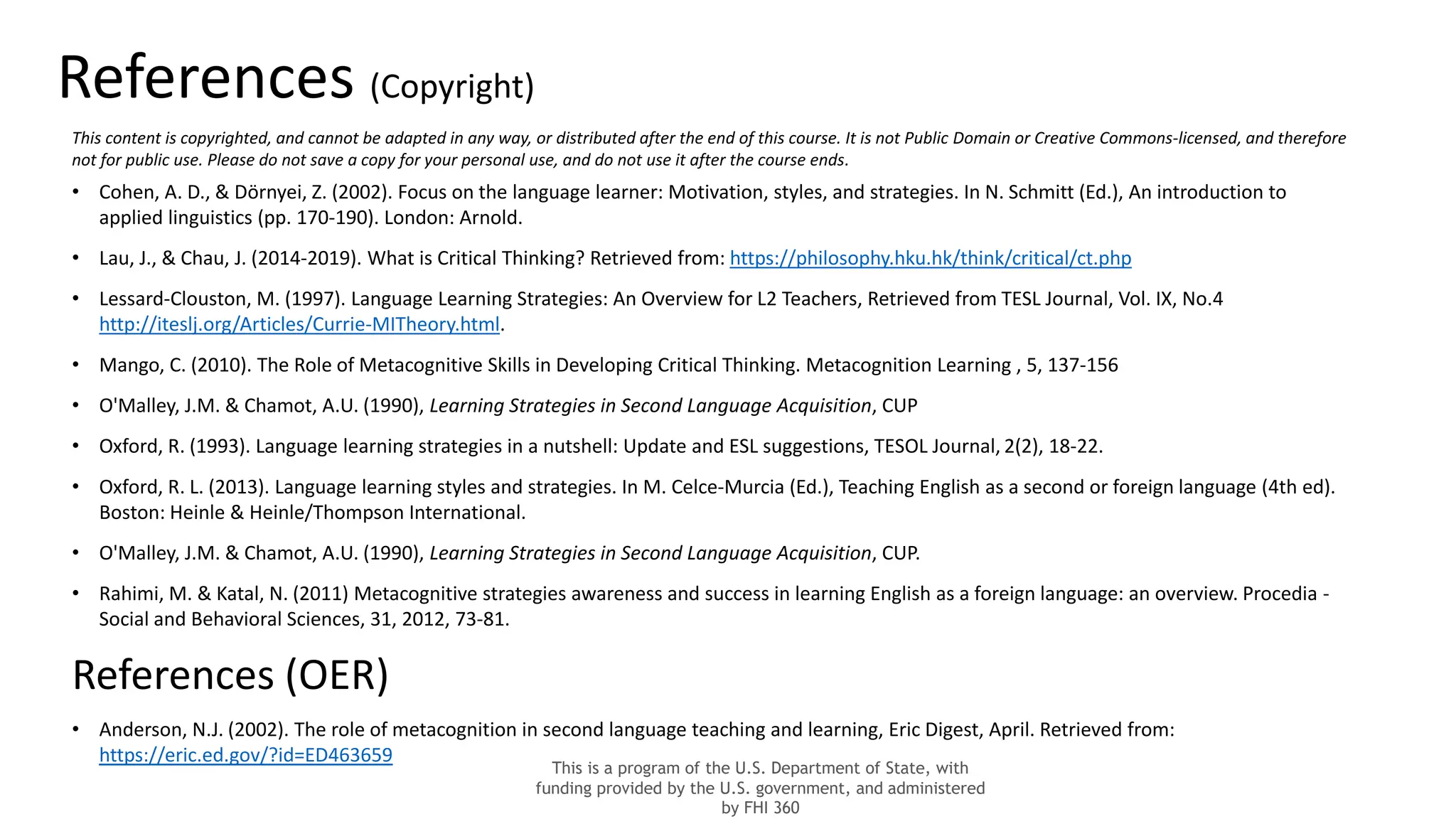This document discusses strategy-based instruction for language learning. It describes how strategy-based instruction combines learning styles with classroom activities and strategies to help students learn how to learn effectively. The approach involves 5 phases: preparation to assess existing strategy use, awareness raising of new strategies, training to teach strategies, practice applying strategies, and personalization so students customize strategies to their own learning. Key points of each phase are outlined, with examples of metacognitive, cognitive and socio-affective strategies provided.
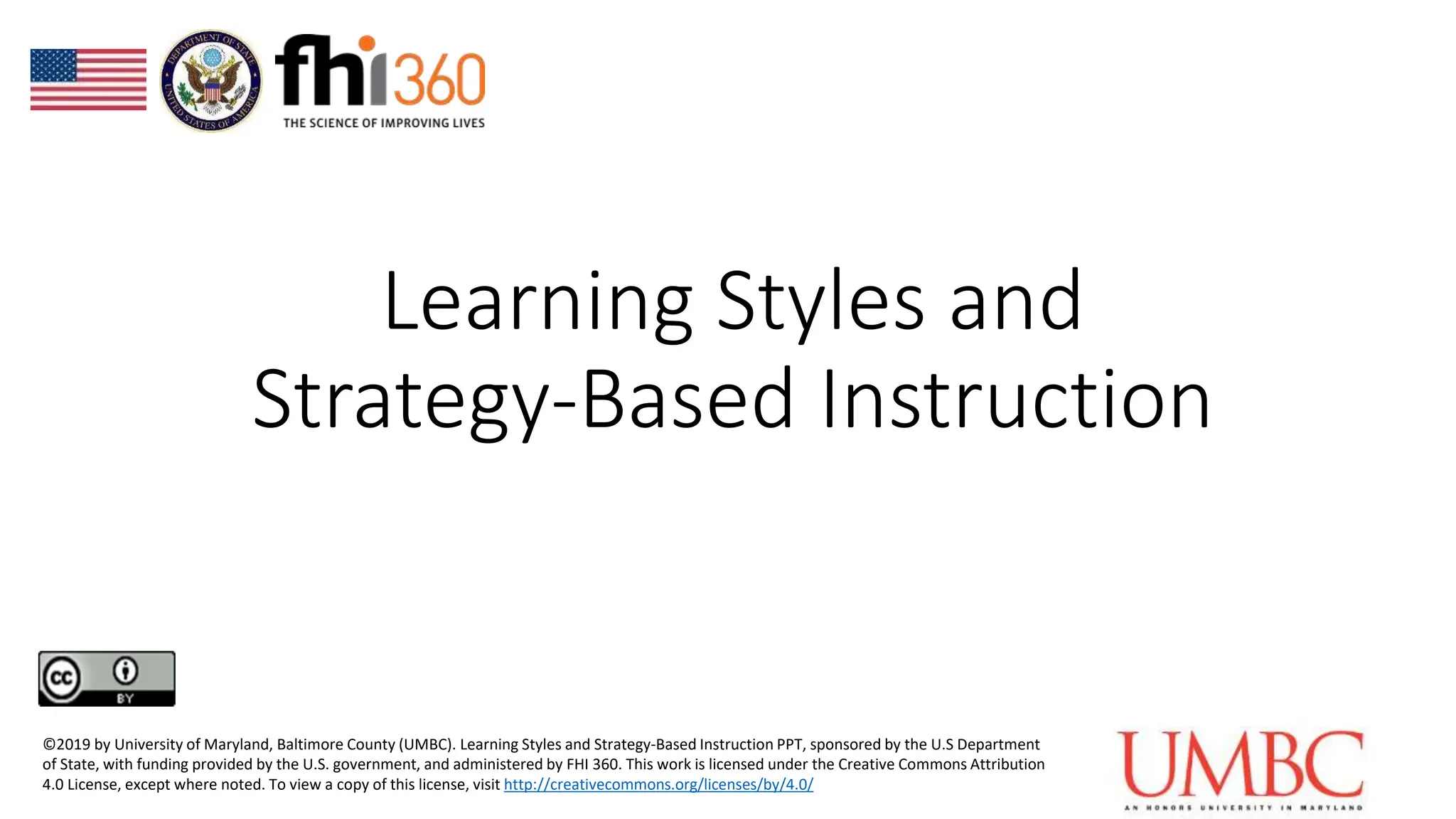



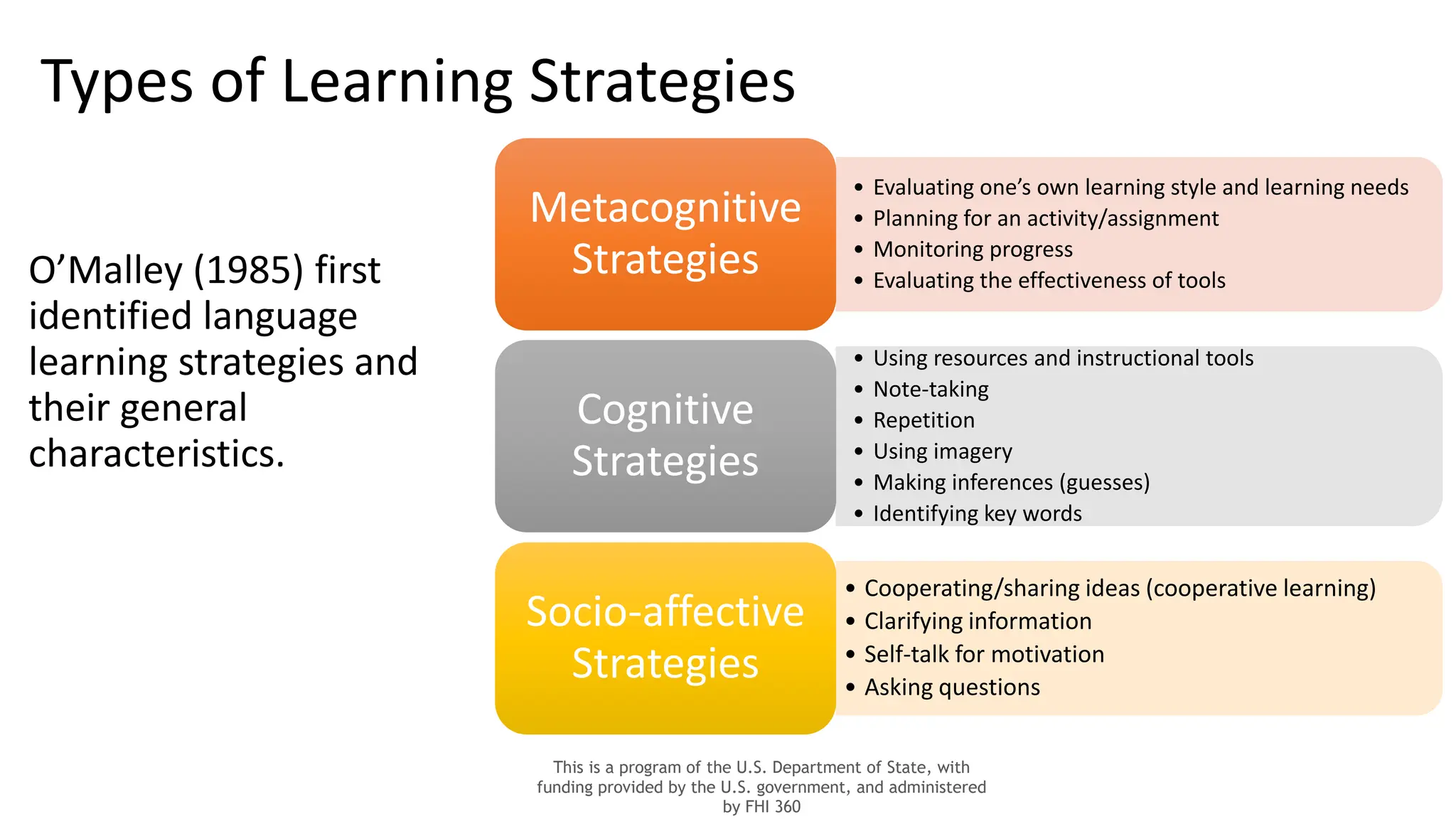




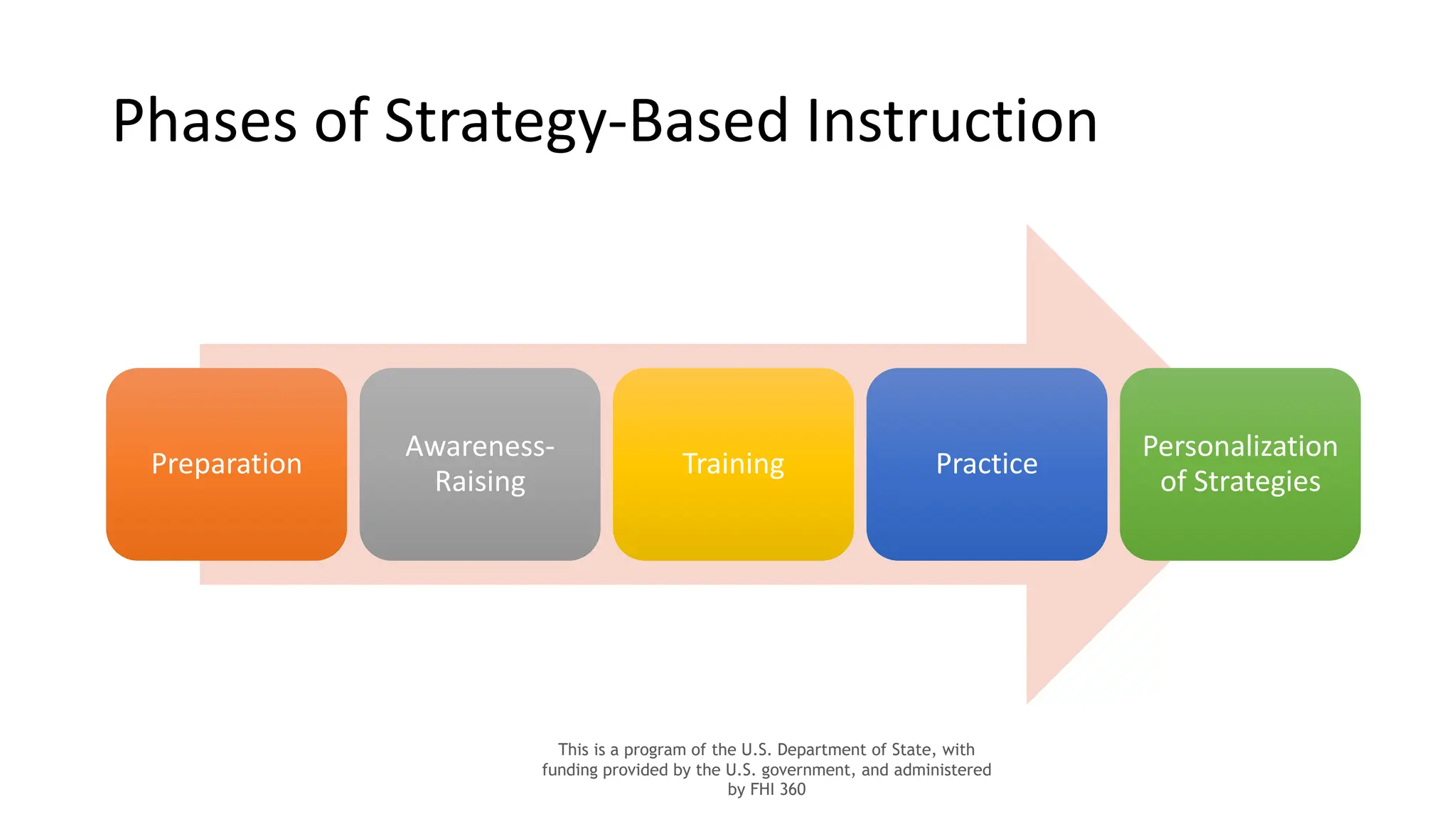
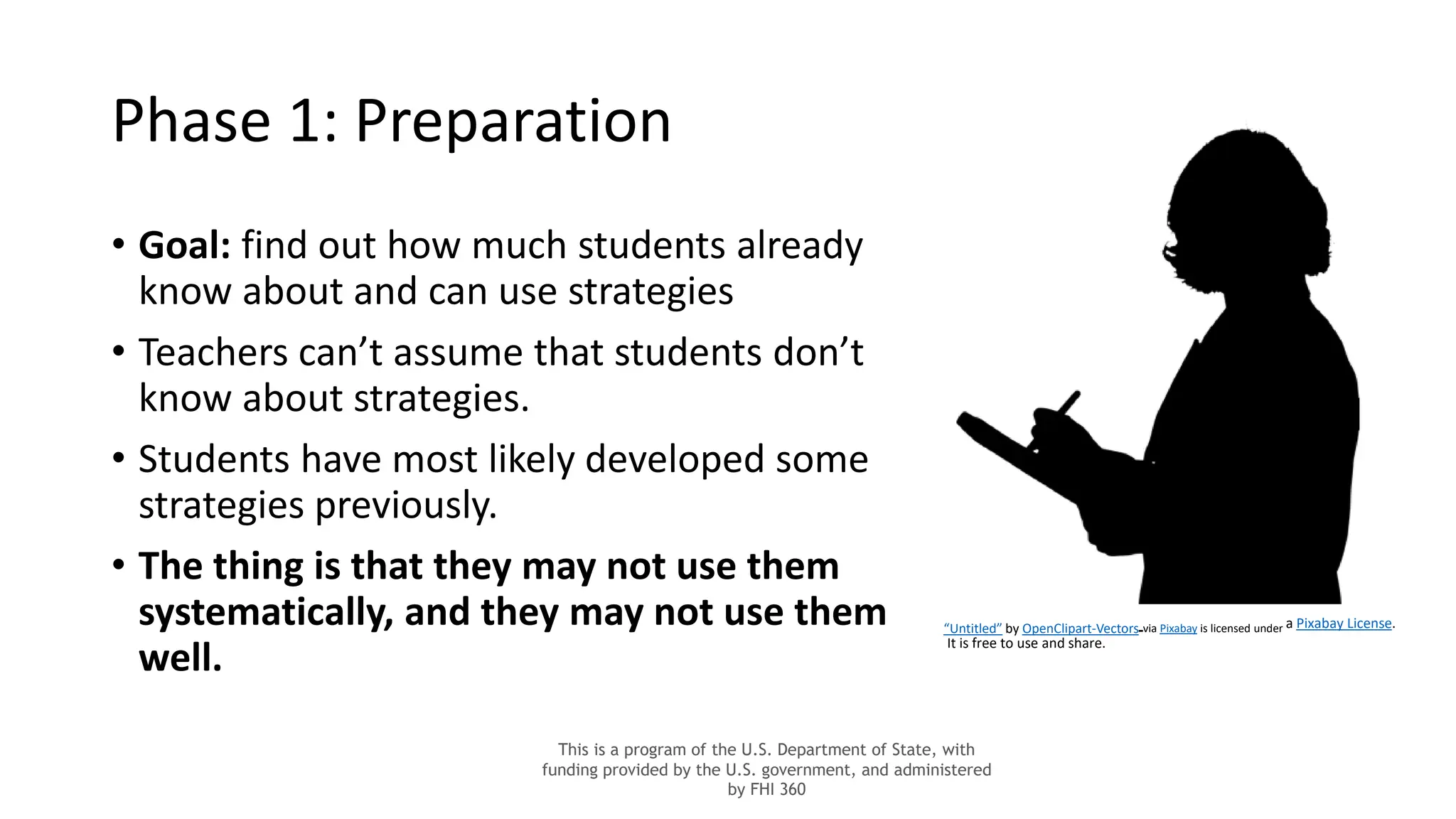

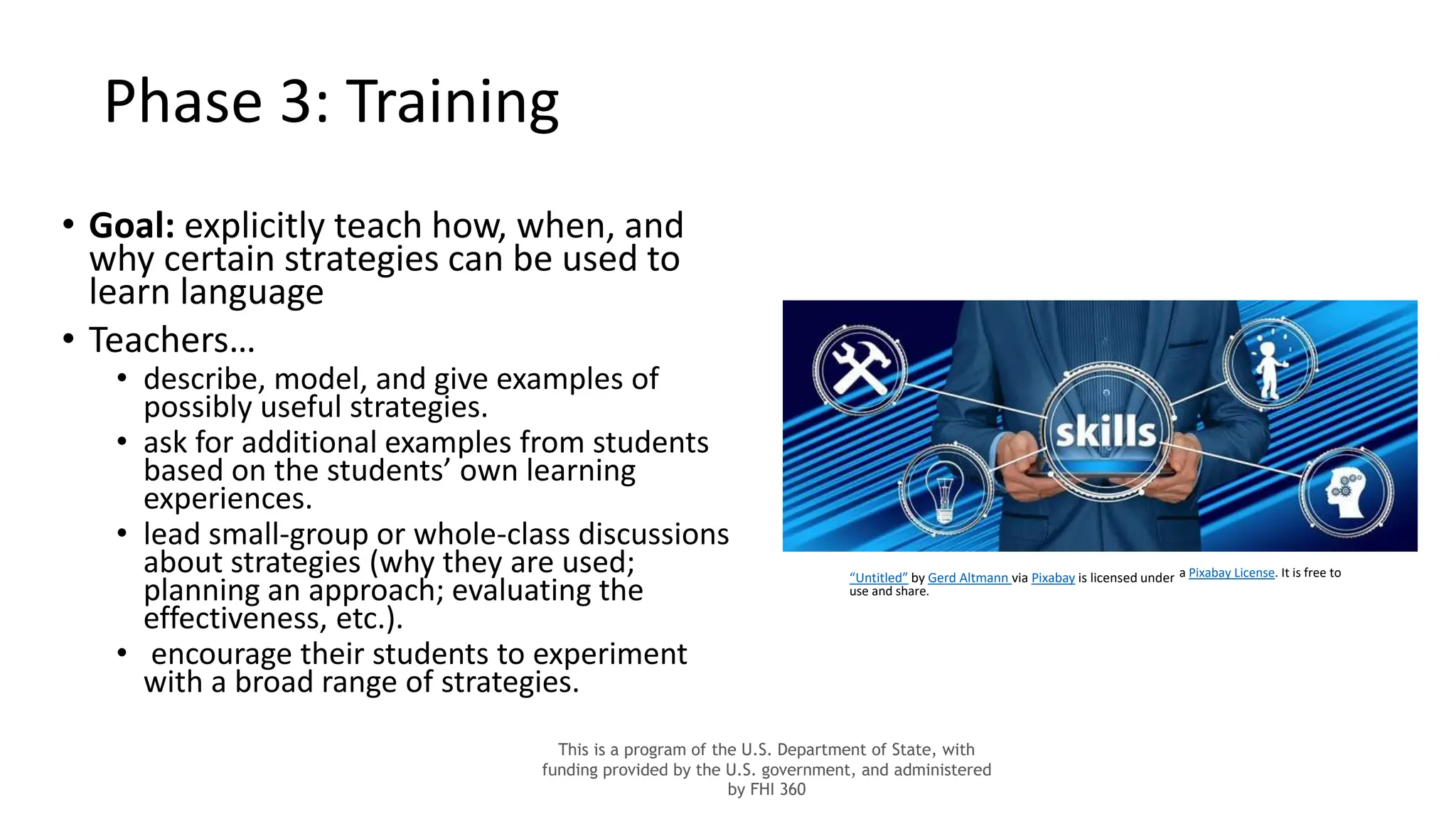

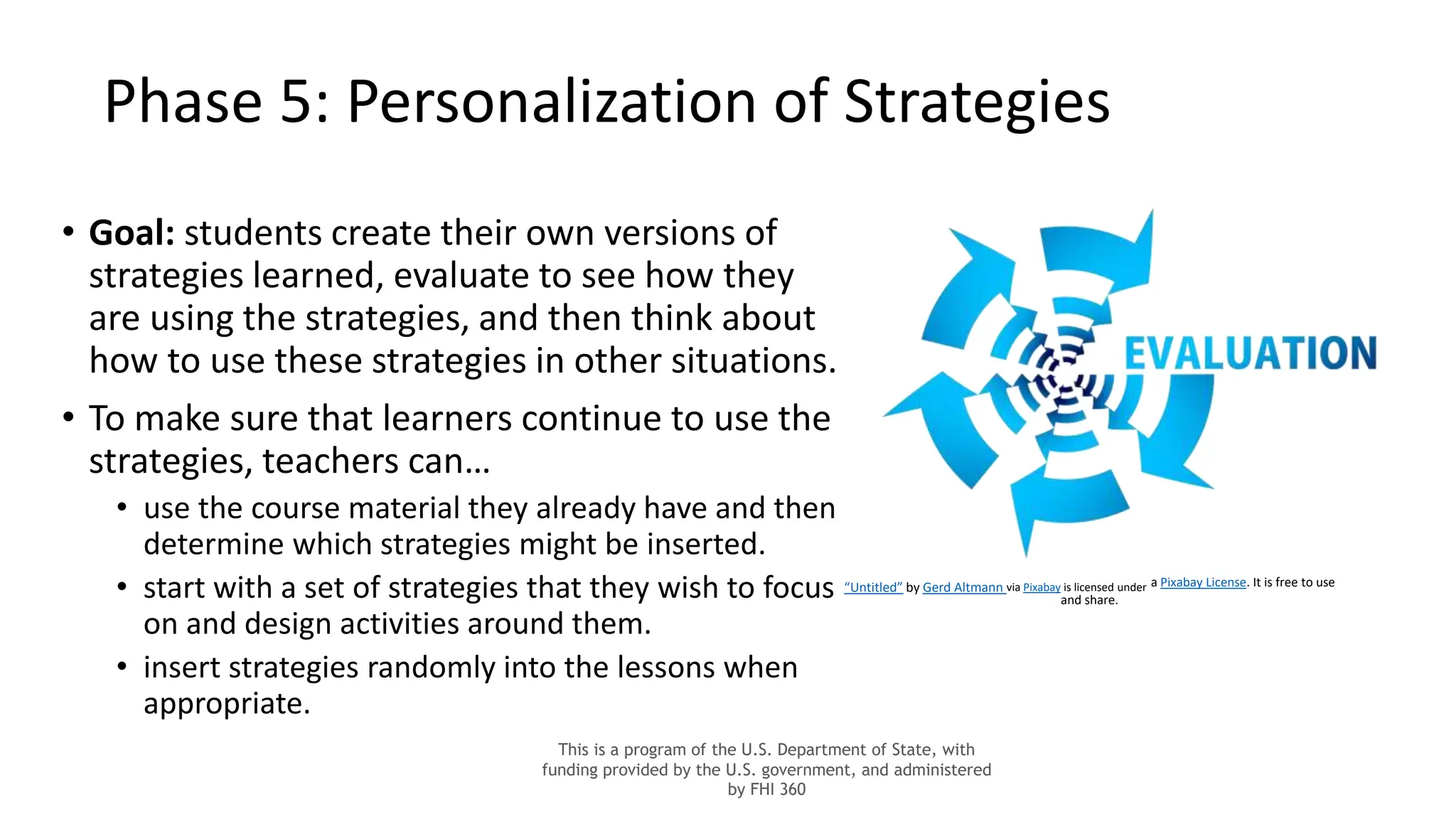

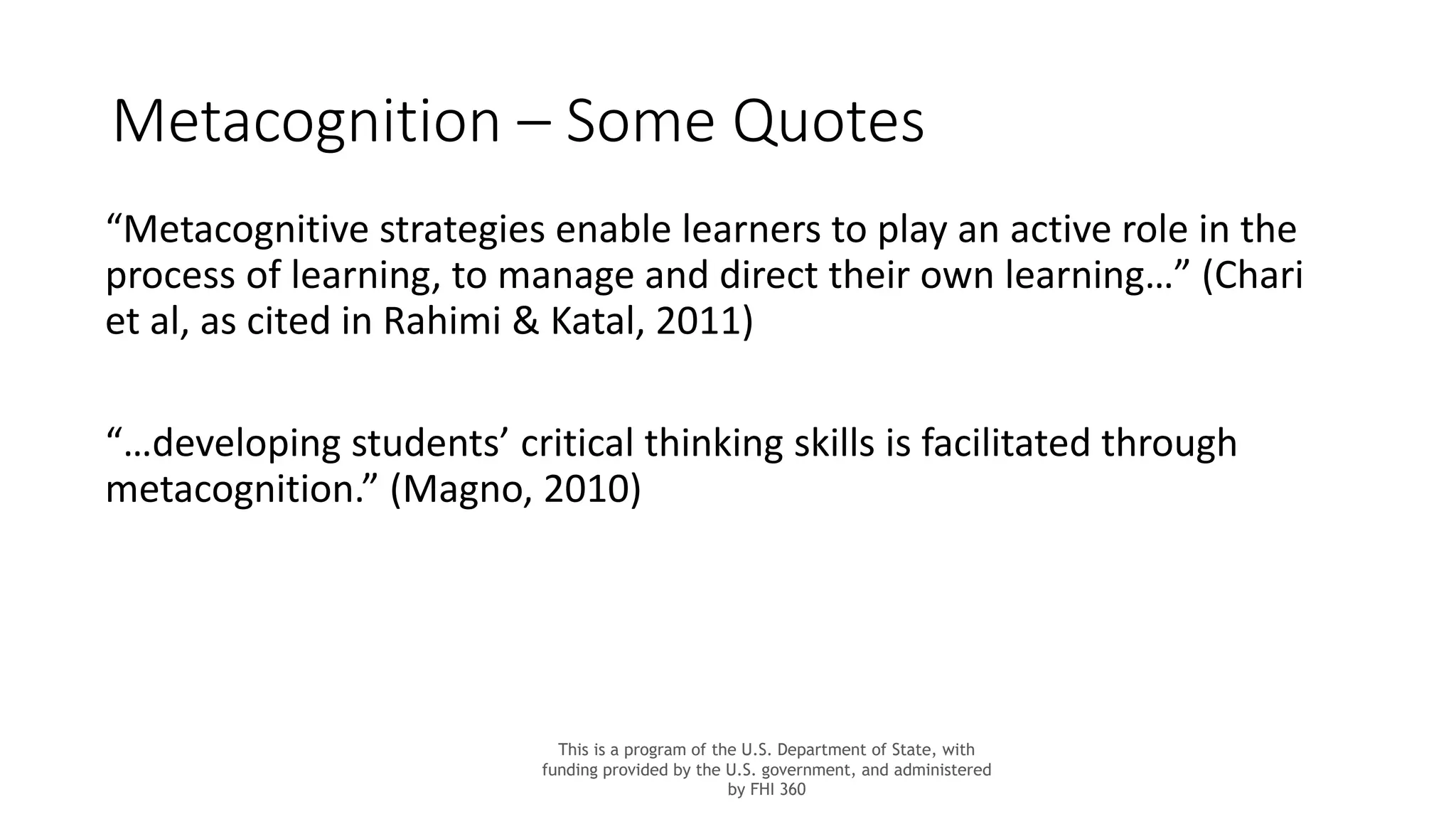

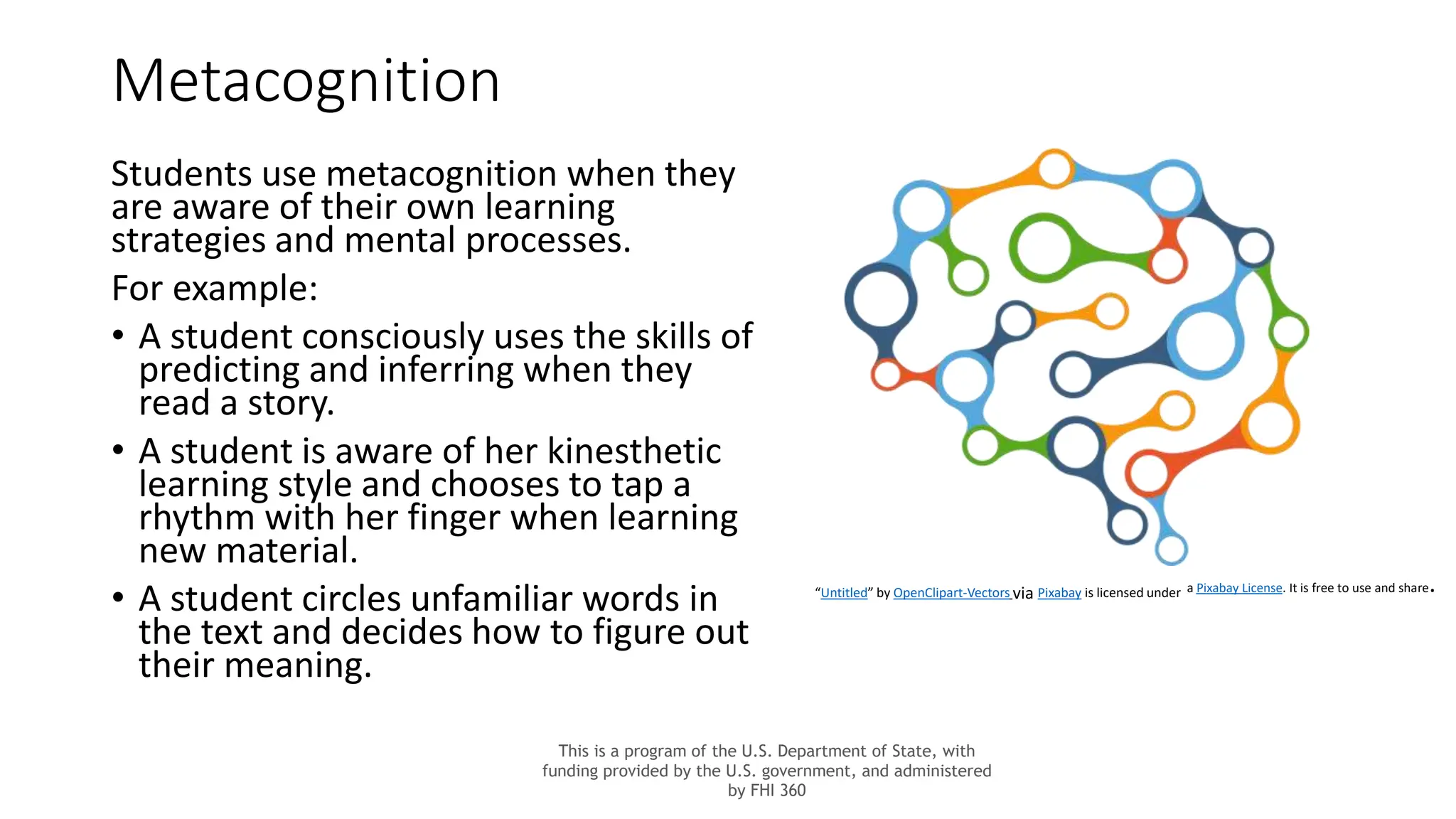







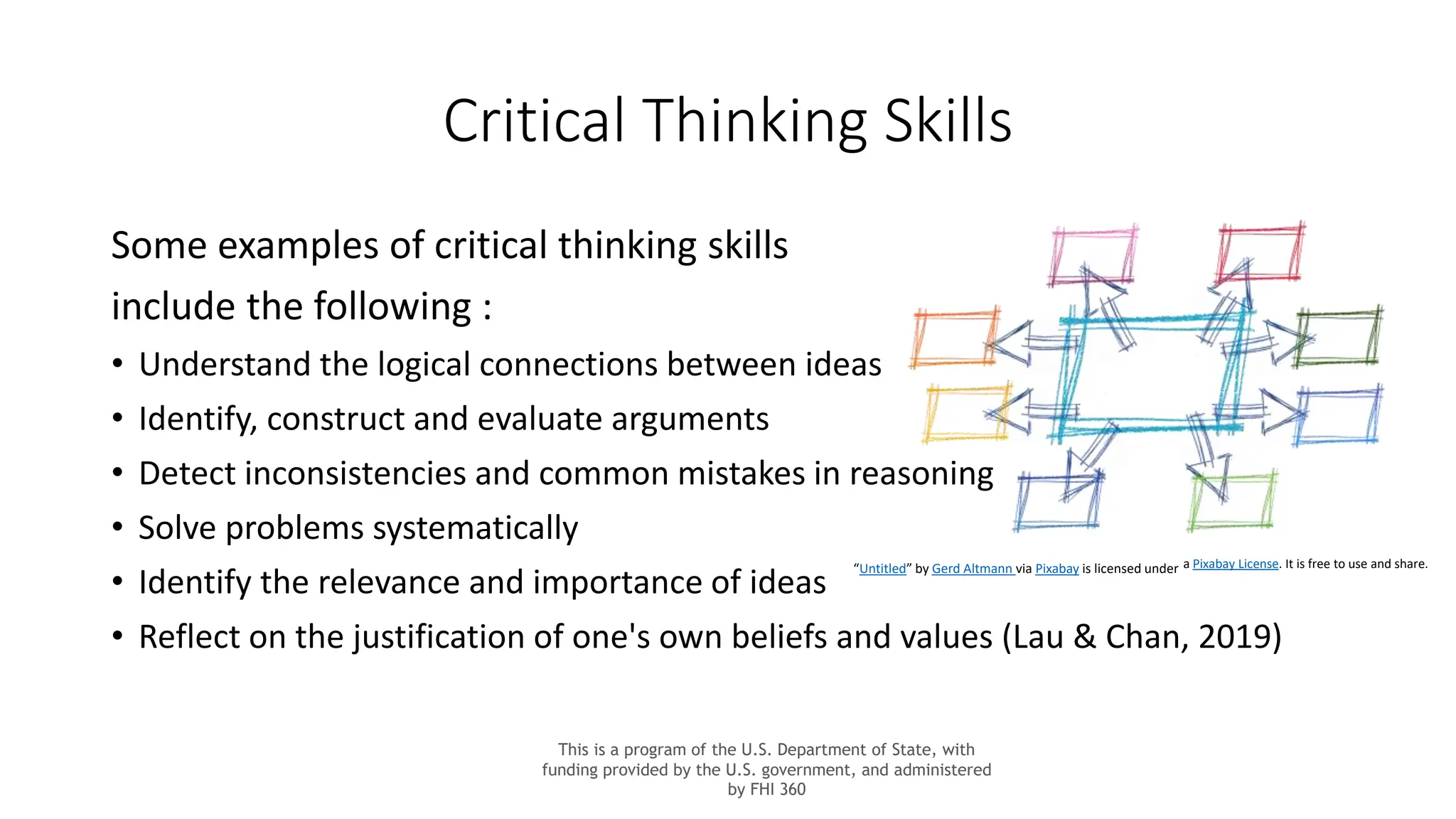


![Bloom’s Taxonomy
The following academic language functions fall under the levels of
Bloom’s taxonomy:
[lowest] Remembering: Recalling information, listing, describing, naming,
Understanding: Explaining ideas, summarizing, interpreting,
classifying.
Applying: Using information in another familiar situation.
Analyzing: Breaking information into parts and exploring
relationships between parts.
Evaluating: Justifying decision, critiquing, judging,
[highest] Creating: Designing, planning, producing, inventing.
This is a program of the U.S. Department of State, with
funding provided by the U.S. government, and administered
by FHI 360](https://image.slidesharecdn.com/moocmodule2strategybasedinstructionmetacognitioncriticalthinking11-240225145447-24114820/75/MOOC_Module-2_StrategyBasedInstruction-Metacognition-CriticalThinking-11-20-1-pptx-30-2048.jpg)



